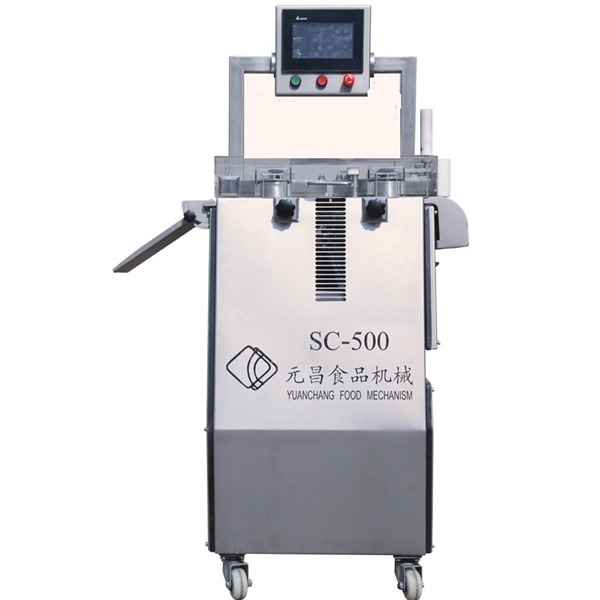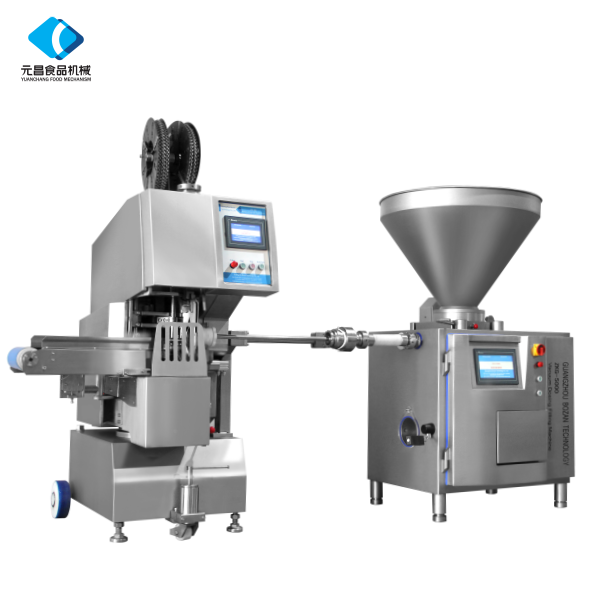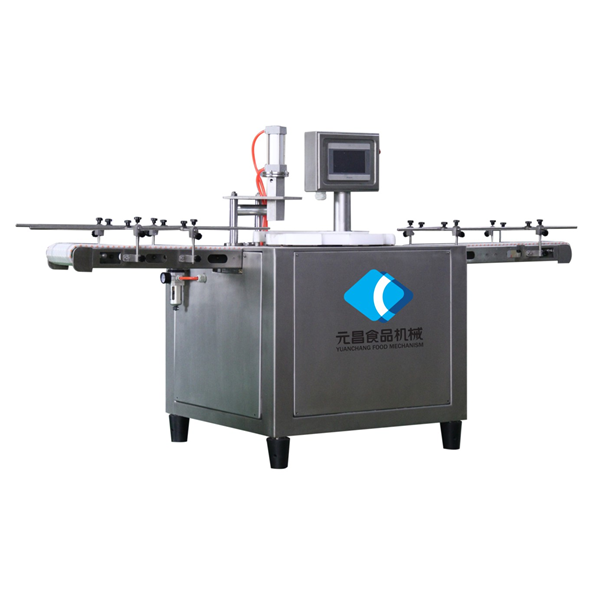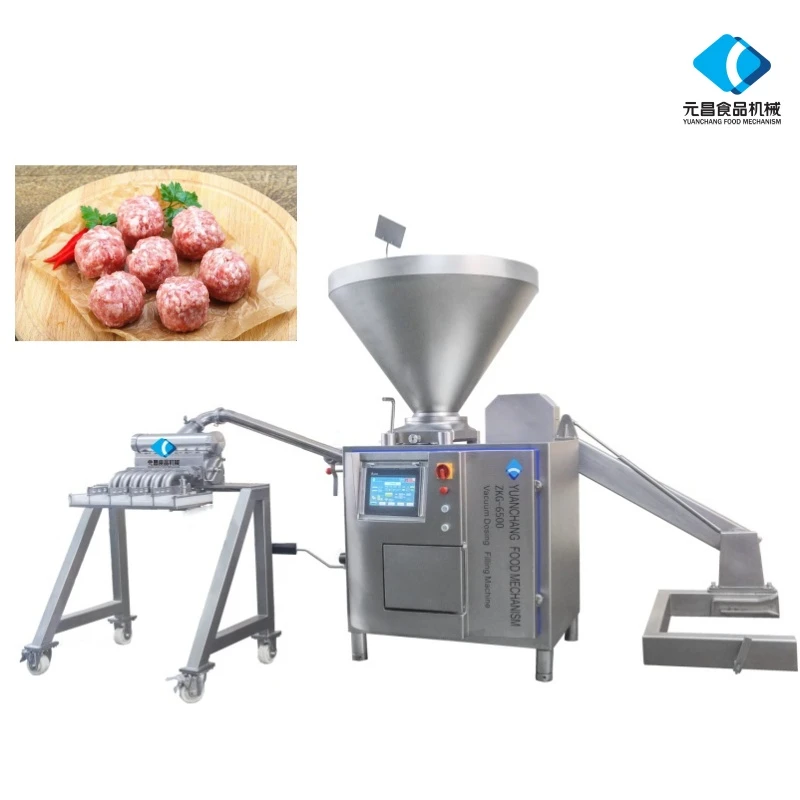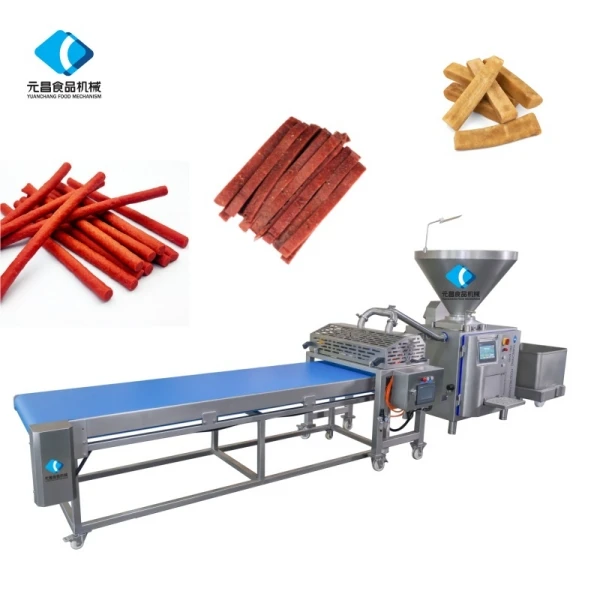The filling and forming process defines how meat and other protein products are prepared for the consumer market. Equipment handling everything from various sausages to restructured bacon, meatballs, strips, and slices must deliver accuracy, consistency, and durability in daily industrial operations. Integrated filling and forming systems are particularly notable for combining speed with precise portioning, driving growing demand for diversified integrated molding solutions.
Meat processors are not only shaping the direction of innovation in forming equipment but also pushing and validating the technical capabilities and machine quality of equipment manufacturers. While sausages dominate many fast-food applications, in recent years rise of casing-free ready-to-eat meat products with varied flavors and shapes provides crucial competitive differentiation in saturated markets. These meat processing machines are engineered not only to create diverse product forms but also to ensure dimensional and weight consistency, enabling manufacturers to meet rigorous commercial standards. The requirements for filling and forming technology extend beyond achieving desired product morphology - they fundamentally determine raw material utilization efficiency, quality consistency maintenance, and production scale reliability.
Auxiliary forming tools are assuming increasingly broader roles within filling systems. Meat fillers play a critical role in processing bulk raw materials and preparing them for subsequent forming operations. Whether directly coupled with sausage fillers or other forming machines, seamlessly integrated filling systems minimize manual intervention while maintaining continuous production flow.
For decades, Hebei Yuanchang Food Machinery Technology Co., Ltd. has witnessed this technology's evolution from basic mechanical solutions to sophisticated automated systems balancing precision and productivity. By leveraging combined filling and extrusion-forming technologies, manufacturers can produce an extensive product range - from traditional sausages to innovative designs - while sustaining operational efficiency and food safety compliance.
Precision and Performance with Vacuum Sausage Filler
The demand for uniformity in sausage production has driven the adoption of advanced filling systems. Among them, the vacuum sausage filler has become a key choice for manufacturers who prioritize both consistency and food safety. By removing air pockets during the filling stage, this technology ensures products have the right texture, longer shelf life, and an improved appearance once cooked. These advantages are particularly valued in large-scale facilities, where even small improvements can translate into significant efficiency gains.
Another solution that reflects both tradition and innovation is the water sausage filler. Unlike older mechanical systems, this equipment applies water pressure to achieve accurate filling without damaging the casing. The result is smoother production with minimal waste, especially important when handling delicate natural casings. For smaller producers, this method offers a way to deliver artisanal quality at higher volumes, bridging the gap between craft and industrial standards.
The need for robust solutions has also driven interest in the industrial sausage filler, which is specifically designed for continuous operation under demanding conditions. Built with durable materials and designed for easy cleaning, these machines withstand the pressure of daily use while supporting strict hygiene requirements. The ability to run consistently without frequent downtime is what makes them essential in competitive markets.
Beyond filling, producers also face financial considerations. Factors like sausage filler price play an important role in decision-making, especially for businesses seeking to expand their capacity. While cost is critical, many companies find that long-term value comes from equipment that integrates seamlessly with mixers, grinders, and forming machines. In this context, choosing the right food processing machine is not just about filling performance—it is about how well it coordinates with the rest of the production line to maintain efficiency.
Hebei Yuanchang Food Machinery Technology Co., Ltd., with decades of experience in designing meat and pet food machinery, has refined filling technology to meet diverse client needs. From vacuum-based systems to water pressure designs, the company’s solutions illustrate how filling machines evolve alongside market demands. Each option provides a different balance of efficiency, precision, and affordability, giving manufacturers flexibility to match equipment with their unique production goals.
Consistency in Production with Water Pressure Sausage Filler
Achieving consistent product quality is one of the greatest challenges in meat processing. Filling technology plays a central role in this process, and equipment like the water pressure sausage filler demonstrates how innovation can improve both precision and reliability. By using controlled pressure, this machine ensures casings are filled evenly, preventing issues such as air pockets or ruptures that compromise appearance and texture. For producers handling large batches, consistency at this stage is what determines the final product’s market acceptance.
In addition to sausages, forming systems have expanded into other protein-based products. The beef patty maker provides a reliable solution for shaping patties that maintain uniform thickness and weight. Consistency is critical in quick-service restaurants, where variations in cooking time or portion size can impact customer experience. For brands seeking product differentiation, the square burger patty maker offers a way to create distinctive items that stand out on store shelves and menus.
Efficiency also depends on reliable fillers. A standard meat filler supports continuous production by transferring prepared mixtures into casings or molds. However, industrial environments demand more specialized tools. The meat filler machine is engineered for heavy-duty operation, ensuring that throughput remains stable even under high-capacity conditions. Its role is not limited to moving raw material—it serves as the link between upstream processing, such as grinding or mixing, and downstream forming and packaging.
Hebei Yuanchang Food Machinery Technology Co., Ltd. has witnessed firsthand how filling and forming solutions evolve alongside market requirements. Since its establishment in 1986, the company has integrated technologies like water-pressure filling and automated patty forming into complete systems that balance hygiene, efficiency, and flexibility. This approach highlights how auxiliary equipment and core machines work together to support modern production goals.
Filling and forming equipment ensures more than product output—it guarantees consistency, safety, and long-term operational stability. By combining filling solutions with advanced forming technologies, manufacturers can deliver products that meet customer expectations and regulatory standards while staying competitive in a demanding industry.
Choosing the Right Meat Filler Machine for Production
Selecting the right filling and forming equipment is not just a technical decision—it is a strategic choice that affects product quality, efficiency, and long-term costs. Among the many options available, the meat filler machine has become a versatile solution for both medium and large-scale manufacturers. By combining high-capacity operation with precise portioning, it enables continuous production without frequent interruptions. This reliability is especially important in facilities where downtime directly impacts profitability.
One variation gaining popularity is the water sausage filler for sale, which uses hydraulic or water-driven pressure to streamline the filling process. Unlike older manual systems, this method ensures smooth casing filling with minimal product loss. Its design supports operators by reducing manual labor while maintaining consistent portion sizes, a factor that contributes directly to both quality control and worker safety.
For businesses that focus on scaling output, the industrial sausage filler offers a different advantage. Built for durability, it withstands intensive workloads while maintaining compliance with hygiene regulations. Its construction allows for faster cleaning cycles, minimizing downtime between production runs. This is particularly valuable in high-demand environments where every hour of efficiency counts.
Producers must also consider specific market needs. The vacuum sausage filler remains a preferred option when air removal is a priority. By eliminating oxygen during the filling process, it extends product shelf life and enhances visual appeal, which are essential in competitive retail markets. For smaller enterprises, factors like sausage filler price influence decision-making just as much as functionality, leading many to compare cost against long-term durability and compatibility with other machines.
Since 1986, Hebei Yuanchang Food Machinery Technology Co., Ltd. has developed filling and forming systems that adapt to these varied requirements. By integrating solutions such as vacuum systems, water-based fillers, and heavy-duty industrial models, the company demonstrates how equipment selection can balance precision, hygiene, and efficiency. Its approach shows that choosing the right filler is not about one machine but about finding the best fit for a production environment.
The modern filling process is diverse, offering multiple technologies to meet different needs. From water-driven fillers to vacuum systems, each machine contributes to a production line designed for consistency, flexibility, and lasting value.




